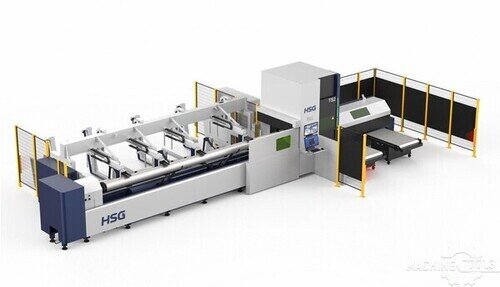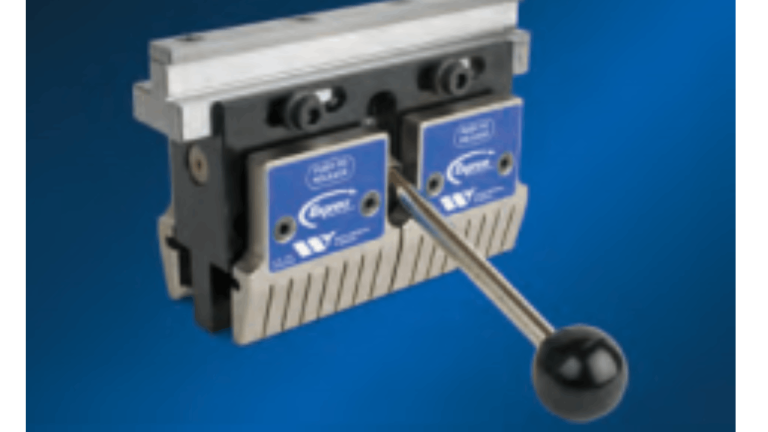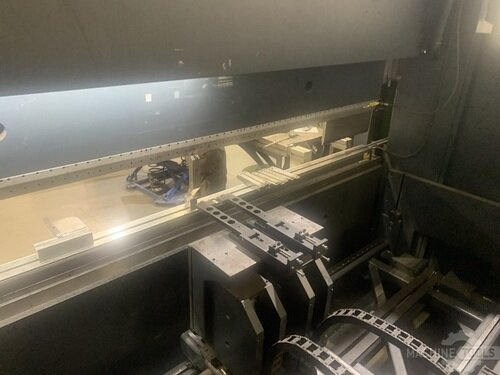As a Regional Sales Executive at Mac-Tech, I’ve spent years walking shop floors, troubleshooting bottlenecks, and working shoulder-to-shoulder with fabricators aiming to boost their competitiveness. My role isn’t just about selling equipment—it’s about understanding each customer’s unique challenges and guiding them toward solutions that make a tangible difference. From recommending the right laser system to integrating it seamlessly with existing processes, I’m dedicated to helping manufacturers achieve higher quality, less waste, and smoother production flow.
Understanding the Fabricator’s Challenge: Edge Quality and Rework Costs
Every fabricator knows that the final quality of a cut edge can make or break a project’s profitability. Poor edge quality often means extra grinding, deburring, or even scrapping parts, leading to lost time and increased labor costs. These secondary processes not only slow down production but also create inconsistencies that can affect downstream operations like welding or painting.
Rework is more than an inconvenience—it’s a hidden drain on resources. When I consult with shops, I often find that rework and post-cut finishing account for a surprising percentage of total production hours. Even small improvements in edge quality can translate to significant savings by reducing or eliminating these secondary steps.
How Modern Laser Technology Transforms Sheet and Tube Cutting
Advancements in laser cutting—especially fiber laser systems—have rewritten the rulebook on edge quality. Modern lasers deliver cleaner, smoother cuts with minimal heat-affected zones, whether you’re working with mild steel, stainless, or aluminum. This precision is especially critical when cutting complex geometries or thin-walled tubes, where traditional methods often fall short.
Today’s lasers also offer intelligent features like automatic focus adjustment, real-time monitoring, and adaptive cutting parameters. These capabilities ensure consistent results across varying material types and thicknesses, minimizing the risk of burrs, dross, or heat distortion. As a result, fabricators can move directly from cutting to assembly or finishing, dramatically reducing the need for secondary processing.
Real-World Impact: Case Studies from the Shop Floor
One of my recent customers, a Midwest job shop, upgraded from CO2 to fiber laser technology. Their edge quality improved so much that they eliminated manual grinding on 80% of their parts. This not only freed up skilled labor for higher-value tasks but also shortened lead times, allowing them to take on more work without expanding their staff.
Another example comes from a tube fabricator who struggled with inconsistent edges using plasma cutting. After switching to a high-precision tube laser, they saw a 30% reduction in rework and improved fit-up for welded assemblies. These real-world gains aren’t just numbers—they represent happier customers, more predictable schedules, and a healthier bottom line.
Comparing Laser Upgrades to Traditional Cutting Methods
Traditional cutting methods like plasma, waterjet, or mechanical shearing have their place, but they often require additional finishing to achieve the same edge quality as a modern laser. Plasma, for instance, can leave a rougher edge and a larger heat-affected zone, while waterjet may produce a smooth cut but at slower speeds and higher operational costs.
Laser upgrades stand out for their ability to deliver precise, clean edges at high speeds with minimal post-processing. The consistency of laser-cut parts also means fewer surprises during assembly and less scrap. For shops looking to increase throughput and reduce manual labor, investing in a laser upgrade is often the most effective way to minimize rework and secondary processing.
Integrating Laser Systems with Press Brakes and Tooling for Seamless Workflow
Edge quality isn’t just about the cut—it impacts every downstream operation, especially bending and forming. When a laser delivers burr-free, accurate edges, press brake operators can work more efficiently, with fewer adjustments and less risk of tool wear or part misalignment.
Many of my customers have found that integrating their laser with smart press brakes and automated tooling systems creates a seamless workflow. Parts move directly from cutting to bending, reducing handling and wait times. Modern software solutions even allow for shared part data between machines, ensuring that tolerances are maintained throughout the process and further minimizing the need for rework.
Measuring ROI: Reduced Rework, Material Savings, and Faster Turnaround
The return on investment for a laser upgrade goes far beyond the initial price tag. By reducing secondary processing, shops save on labor, consumables, and energy. Improved edge quality also leads to less scrap, better material utilization, and faster turnaround times—all of which contribute to a stronger bottom line.
I’ve seen customers recoup their investment in as little as 12–18 months, thanks to increased capacity and reduced waste. When evaluating ROI, it’s important to factor in not just direct savings but also intangible benefits like improved customer satisfaction, the ability to take on more complex work, and enhanced shop reputation.
HSG TS2 HIGH SPEED TUBE FIBER LASER CUTTING MACHINE
R1 HIGH-SPEED TINY TUBE LASER CUTTING MACHINE
- Follow-up support for high precision
- Efficient multi-load loading
- Chuck jumping for short trailings
- Intelligent Bus operating System
Key Considerations When Investing in Laser Upgrades
Choosing the right laser system requires a careful assessment of your current and future needs. Key factors include material types and thicknesses, part volumes, desired tolerances, and integration with existing equipment. It’s also wise to consider automation options—such as material handling or part sorting—that can further streamline your workflow.
Support and training are just as critical as the hardware itself. Look for suppliers who offer comprehensive onboarding, responsive service, and ongoing consultation. A laser is a significant investment, and maximizing its value depends on having the right partner in your corner.
Building Trust: Partnering with a Sales Expert for Tailored Solutions
No two fabrication shops are alike. That’s why I believe in a consultative approach—listening first, then recommending solutions based on real-world needs. Whether it’s a high-powered sheet laser, a specialized tube system, or integrating new machines with your press brakes, I’m committed to helping you find the best fit for your operation.
Trusted partnerships are built on transparency, expertise, and ongoing support. At Mac-Tech, we’re not just selling machines; we’re investing in your long-term success. If you’re considering a laser upgrade or want to explore ways to reduce rework and secondary processing, I’m here to help you navigate the options and make an informed decision.
FAQ
How much can I expect to reduce rework with a laser upgrade?
Many shops see a 50–80% reduction in secondary processing, depending on materials and part complexity.
Are fiber lasers better than CO2 lasers for edge quality?
Fiber lasers generally produce cleaner edges, especially on thinner materials and reflective metals like aluminum and brass.
Can a new laser system integrate with my existing press brakes?
Yes. Modern lasers often feature software and automation options that sync with press brakes for streamlined workflow.
What kind of training is required for operators?
Most suppliers offer comprehensive training. Operators can typically become proficient within a few weeks.
Is automation necessary, or can I upgrade just the laser?
Automation adds efficiency but isn’t required. Many shops start with a laser upgrade and add automation later.
How do I calculate the ROI on a laser investment?
Consider labor savings, reduced scrap, faster turnaround, and increased capacity. Many customers see ROI within 1–2 years.
Does Mac-Tech offer support after installation?
Absolutely. We provide ongoing service, training, and consultation to ensure your continued success.
Get Weekly Mac-Tech News & Updates








